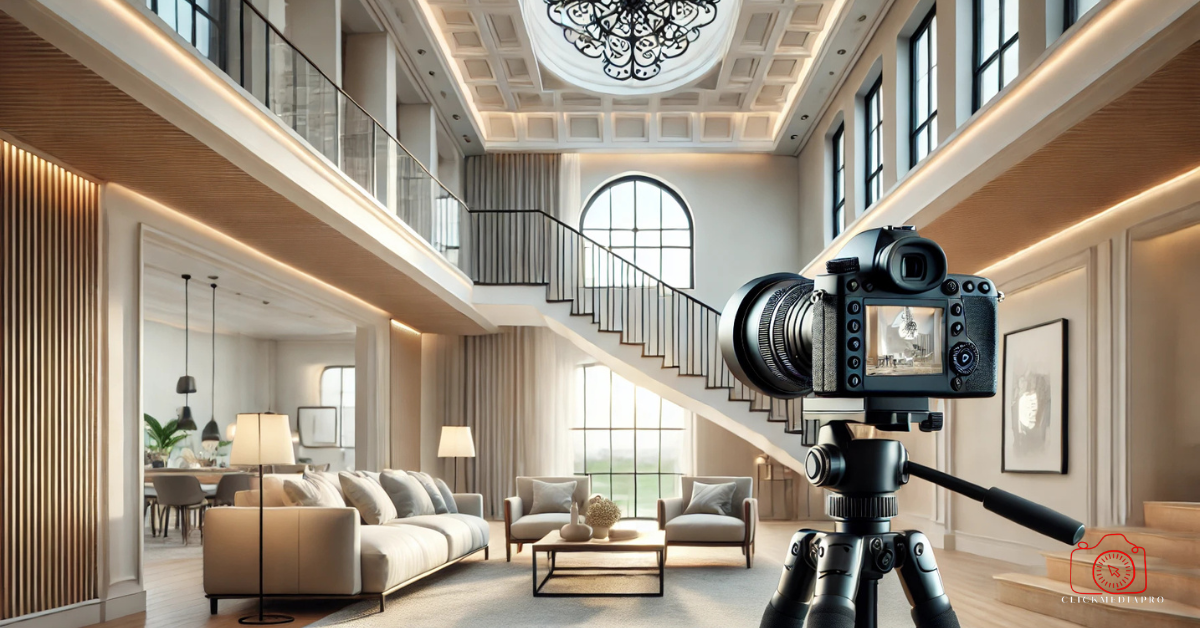Real estate photography plays a crucial role in showcasing a property’s best features and attracting potential buyers. In a competitive market, highlighting unique architectural features—such as vaulted ceilings, intricate moldings, custom-built staircases, or floor-to-ceiling windows—can make a listing stand out from the rest. Professional photography, when done right, can emphasize these distinctive elements and create a compelling visual story that resonates with buyers.
In this detailed guide, we’ll explore effective strategies and techniques for capturing a property’s architectural highlights to ensure they receive the attention they deserve.
Table of Contents
ToggleThe Importance of Showcasing Architectural Features
Unique architectural details are what give a home character and charm. Whether it’s a historic property with intricate woodwork or a modern home with an open floor plan, highlighting these features in photos can:
- Create a Strong First Impression: Eye-catching architectural elements make listings memorable.
- Increase Perceived Value: A well-photographed feature can justify a higher asking price.
- Tell the Property’s Story: Every home has a unique style that appeals to different buyer preferences.
- Maximize Listing Views: High-quality images showcasing special features attract more online traffic.
By using strategic real estate photography techniques, you can ensure these architectural elements shine in every shot.
Preparation: Setting the Stage for Success
Before taking photos, it’s essential to prepare the property to make architectural features stand out. Follow these steps:
Declutter and Clean
- Ensure the space is clean and free from distractions.
- Remove any furniture or décor that obstructs important features.
- Polish glass surfaces, floors, and architectural details to enhance their appearance in photos.
Lighting Matters
- Use natural light to your advantage by shooting at the right time of day.
- Open curtains and blinds to let in as much light as possible.
- Consider adding artificial lighting to accentuate key areas.
Staging to Complement Architecture
- Use minimal staging to draw attention to the feature rather than distract from it.
- Arrange furniture to frame focal points such as fireplaces, bay windows, or ceiling beams.
- Utilize neutral colors to let architectural details shine.
Camera Equipment and Settings for Architectural Photography
Investing in the right photography equipment and understanding how to use it can make all the difference in capturing unique features effectively.
Essential Gear for Real Estate Photography
- DSLR or Mirrorless Camera: High-resolution images are crucial to highlight details.
- Wide-Angle Lens (16-24mm): Helps capture the grandeur of large spaces without distortion.
- Tripod: Ensures sharp images and allows for long exposure shots in low-light conditions.
- Remote Shutter Release: Reduces camera shake for crisp, professional results.
- Flash or External Lighting: Useful for balancing exposure and reducing shadows.
Camera Settings for Optimal Results
- Aperture: Use a small aperture (f/8 to f/11) for deep depth of field to keep architectural features sharp.
- ISO: Keep ISO low (100-400) to reduce noise and maintain image quality.
- Shutter Speed: Use slower shutter speeds with a tripod for brighter images in low-light conditions.
- White Balance: Adjust to match natural or artificial lighting to keep colors true to life.
Composition Techniques to Highlight Architectural Details
Photography is as much about composition as it is about equipment. Implement these composition techniques to highlight architectural features effectively.
Leading Lines
- Use natural architectural lines such as hallways, staircases, or beams to guide the viewer’s eye to the feature.
- Position your shot to create a sense of depth and perspective.
Framing the Feature
- Use doorways, archways, or windows to frame the focal architectural element.
- This technique draws attention to the detail while providing context.
Symmetry and Balance
- Capture symmetrical features such as columns, fireplaces, or staircases with centered shots.
- Balanced compositions create a visually pleasing and professional look.
Close-Up Shots for Detail Emphasis
- Highlight intricate moldings, textures, or craftsmanship by getting up close with a macro or standard lens.
- Ensure the lighting accentuates the textures and materials used.
Utilizing Angles and Perspectives
- Try shooting from different angles to emphasize height, depth, or design intricacies.
- Use low angles to showcase tall ceilings or high vantage points to capture floor designs.
Highlighting Specific Architectural Features
Different homes boast unique design elements that should be captured uniquely. Here’s how to best highlight specific architectural features:
Fireplaces
- Ensure the fireplace is the central focus with surrounding décor complementing it.
- Take shots from various angles, including straight-on and side perspectives.
- Capture images with the fire on to create a warm, inviting atmosphere.
Vaulted and High Ceilings
- Use a wide-angle lens to capture the full height of the ceilings.
- Incorporate elements like chandeliers or beams to provide scale.
- Shoot from a low angle to exaggerate the sense of space.
Staircases
- Capture staircases from the bottom to showcase grandeur and from the top to highlight design flow.
- Focus on materials such as wrought iron railings or wooden steps to enhance texture.
Windows and Natural Light
- Take advantage of natural lighting to enhance spaces featuring large windows.
- Position the camera to include scenic outdoor views for added appeal.
Open Floor Plans
- Capture the flow of space by using wide-angle shots that connect rooms seamlessly.
- Highlight features like exposed beams or stylish room dividers that define the layout.
Post-Processing to Enhance Architectural Photography
After capturing the perfect shots, post-processing can further enhance the architectural features of a property.
Color Correction and Lighting Adjustments
- Ensure colors remain true to life by adjusting white balance and exposure.
- Enhance lighting to make architectural details pop without overexposing the shot.
Removing Distractions
- Use software tools to remove clutter or unwanted elements from the photo.
- Straighten lines and correct lens distortions to ensure a professional appearance.
Highlighting Textures and Depth
- Enhance textures of stone, wood, and other materials using contrast adjustments.
- Add subtle sharpening to bring out intricate architectural details.
Virtual Staging for Empty Homes
- Consider adding virtual furniture to empty spaces to emphasize architectural highlights.
- Use staging to suggest room functionality and highlight key focal points.
Common Mistakes to Avoid
Even the best photographers can make mistakes that detract from showcasing architectural features effectively. Avoid these pitfalls:
- Overcrowding the Space: Keep furniture and décor minimal to allow architecture to take center stage.
- Ignoring Lighting Conditions: Poor lighting can obscure key details and create shadows.
- Incorrect Angles: Shooting from the wrong perspective can make spaces look smaller or distorted.
- Over-Editing: Excessive retouching can make photos look unrealistic and untrustworthy to buyers.
Conclusion
Showcasing unique architectural features through real estate photography requires a combination of preparation, skill, and post-processing. By using the right equipment, lighting techniques, and composition strategies, real estate photographers can emphasize a property’s best attributes and attract more potential buyers.
Whether you’re highlighting an elegant staircase, custom-built cabinetry, or striking vaulted ceilings, the key is to create compelling visuals that tell a story and allow buyers to envision themselves in the space.
With careful attention to detail and strategic planning, architectural photography can elevate your real estate listings and set them apart in today’s competitive market.

